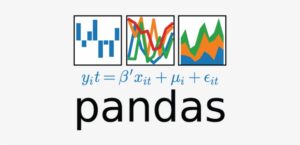Python :
Python is a high-level, general-purpose programming language. Its design philosophy emphasises code readability with the use of significant indentation. Python is dynamically-typed and garbage-collected. It supports multiple programming paradigms, including structured, object-oriented and functional programming. It is designed and developed by Guido van Rossum.
Top Reasons to Learn Python :
- Data science.
- Scientific and mathematical computing.
- Web development.
- Finance and trading.
- System automation and administration.
- Computer graphics.
- Basic game development.
- Security and penetration testing.
Data Science :
Data science is the study of data to extract meaningful insights for business. It is a multidisciplinary approach that combines principles and practices from the fields of mathematics, statistics, artificial intelligence, and computer engineering to analyse large amounts of data.
Use of python in data science :
It is one of the best languages used by data scientists for various data science projects /applications. Python provides great functionality to deal with mathematics, statistics and scientific function. Discover patterns and trends in datasets to get insights. Create forecasting algorithms and data models. Improve the quality of data or product offerings by utilising machine learning techniques
Data Science With Python Core Skills :
Course. Using Jupyter Notebooks, Explore Your Dataset With Pandas, Reading and Writing CSV Files, Working With JSON Data in Python, Pandas DataFrames 101. Python Plotting With Matplotlib, Data Cleaning With pandas and NumPy.
Popular python toolboxes/ libraries :
NumPy, SciPy, Pandas, SciKit-Learn.
Visualisation libraries :
Matplotlib ,Seaborn.
Python libraries for data science :
NumPy: introduces objects for multidimensional arrays and matrices,as well as functions that allow it to easily perform advanced mathematical and statistical operations on those objects.

It provides vectorization of mathematical operations on arrays and matrices which significantly improves the performance. Many other python libraries are built on NumPy.
Link: http://www.numpy.org/
SciPy: collection of algorithms for linear algebra, differential equations, numerical integration, optimization, statistics and more.

Pandas: adds data structures and tools designed to work with table-like data (similar to Series and Data Frames in R).It provides tools for data manipulation: reshaping, merging, sorting, slicing, aggregation etc. It allows handling missing data.

SciKit-Learn: provides machine learning algorithms: classification, regression, clustering, model validation etc.It built on NumPy, SciPy and matplotlib.
Link: http://scikit-learn.org/
Matplotlib: python 2D plotting library which produces publication quality figures in a variety of hardcopy formats. A set of functionalities similar to those of MATLAB line plots, scatter plots, barcharts, histograms, pie charts etc. It is relatively low-level. some effort needed to create advanced visualisation.
Link: https://matplotlib.org/

Link: https://seaborn.pydata.org/

BASIC PACKAGE OF DATA SCIENCE ENGINEER:
Data Scientist salary in India ranges between ₹ 4.0 Lakhs to ₹ 25.0 Lakhs with an average annual salary of ₹ 10.0 Lakhs. Salary estimates are based on 24.8k latest salaries received from Data Scientists















